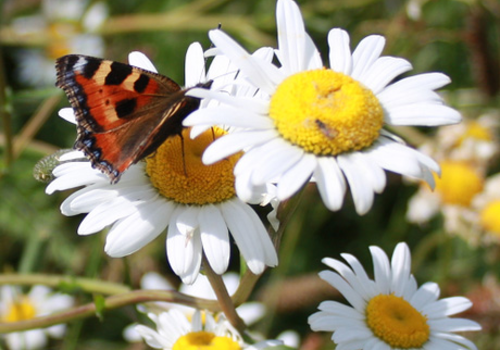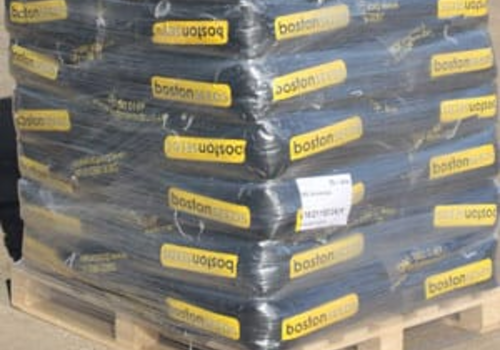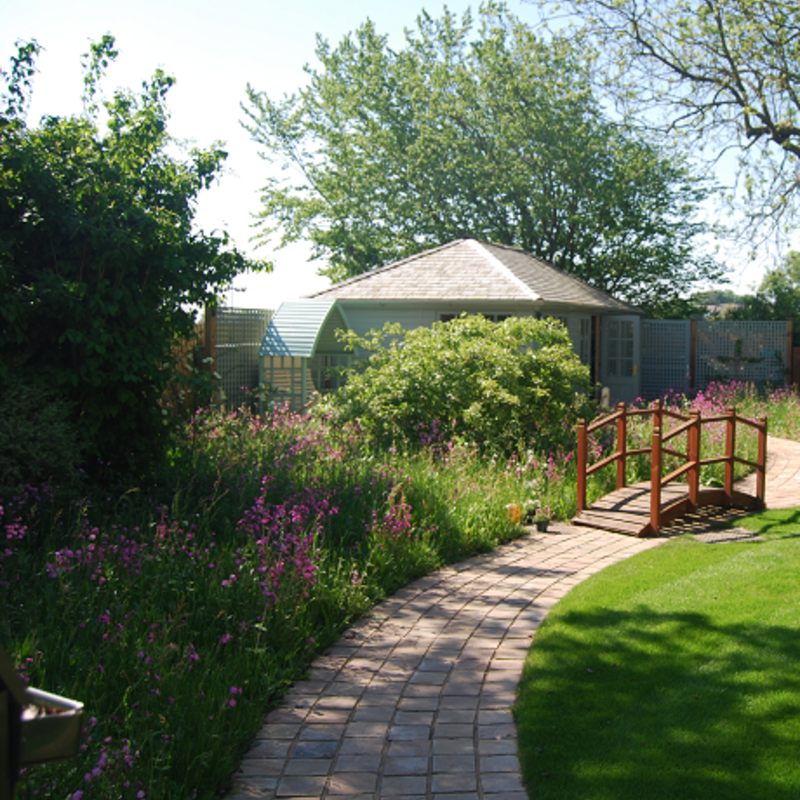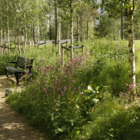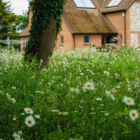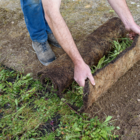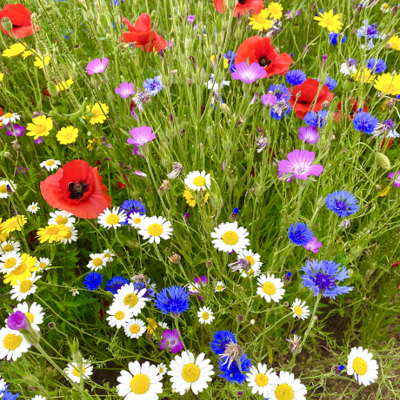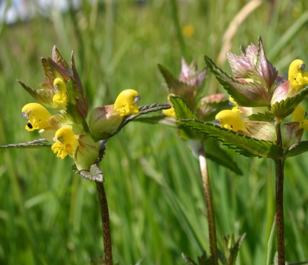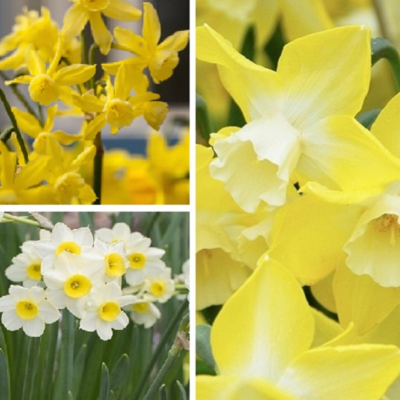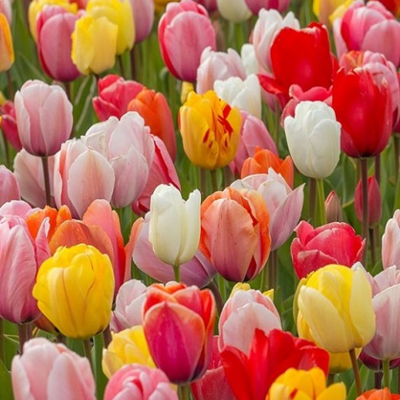Shade Tolerant Wildflower Turf®
Make sure the shaded areas in your garden are flourishing with the Shade Tolerant Wildflower Turf® ! With a minimum of 75% wildflowers, this turf has been carefully formulated to include species which thrive in shaded areas, ensuring you get maximum colour throughout all areas of your garden! Lifted and delivered throughout the year, this turf is well climatized to a range of soils throughout the UK.
- 20% Grass, 80% Flora - 38 Native wildflower species
- UK Native perennial wildflower turf
- Shade and drought tolerant in a range of soil types
- Minimum established height: 30cm. Maximum established height: 75cm
- Typical applications: areas where sunlight is limited
With a vast range of wildflower species, this heavily perennial turf promotes longevity in your gardens, so you can be sure you’re getting the best value out of your Wildflower Turf!
Our Standard Turf Range has been grown on for 8-12 weeks. For turf that is further along its growing cycle with advanced plant and root development, look towards our Mature Range which has been grown on for a minimum of 20 weeks.
If you have a question about the wildflower turf, head over to our advice page to find out more on how to create your perfect wildflower turf meadow!
Please note that your order will only be delivered from Tuesdays to Thursdays. Due to the nature of Wildflower Turf, it is cut and lifted at the point of order. Therefore, unfortunately, we’re unable to accept any cancellations or returns.
Mixture Specification
Turf size will vary with application but is generally 1m x 0.64m = 0.64m² slabbed or 1.62m x 0.77m = 1.25m² rolled.
| Flora (80%): | ||
| Autumn Hawkbit | (Perennial) | UK Native |
| Betony | (Perennial) | UK Native |
| Birdsfoot Trefoil | (Perennial) | UK Native |
| Common Cat's Ear | (Perennial) | UK Native |
| Common Knapweed | (Perennial) | UK Native |
| Common Sorrel | (Perennial) | UK Native |
| Common Toadflax | (Perennial) | UK Native |
| Common Vetch | (Perennial) | UK Native |
| Cowslip | (Perennial) | UK Native |
| Dames Violet | (Perennial) | UK Native |
| Field Scabious | (Perennial) | UK Native |
| Hemp Agrimony | (Perennial) | UK Native |
| Kidney Vetch | (Perennial) | UK Native |
| Lady's Bedstraw | (Perennial) | UK Native |
| Meadow Buttercup | (Perennial) | UK Native |
| Meadow Cranesbill | (Perennial) | UK Native |
| Meadow Vetchling | (Perennial) | UK Native |
| Meadowsweet | (Perennial) | UK Native |
| Musk Mallow | (Perennial) | UK Native |
| Nettle Leaved Bellflower | (Perennial) | UK Native |
| Ox Eye Daisy | (Perennial) | UK Native |
| Perforate St John's Wort | (Perennial) | UK Native |
| Ragged Robin | (Perennial) | UK Native |
| Red Campion | (Perennial) | UK Native |
| Ribwort Plantain | (Perennial) | UK Native |
| Rough Hawkbit | (Perennial) | UK Native |
| Sainfoin | (Perennial) | UK Native |
| Salad Burnet | (Perennial) | UK Native |
| Self-heal | (Perennial) | UK Native |
| Sweet Cicley | (Perennial) | UK Native |
| Grasses (20%): | ||
| Sheep's Fescue | ||
| Crested Dogstail | ||
| Yellow Oatgrass |
Sowing & Establishment
How to lay your Wildflower Turf
1 - Delivery
Depending on the time of year, your Wildflower Turf will be delivered on a pallet in either rolls or slabs. The turf should be laid within 24 hours of receiving the delivery to prevent drying out. If this is not viable, remove the turf from the pallet, unroll and keep watered until it’s able to be laid.
2 - Ground Preparation
Ensure any weeds or debris are removed from the area and take it back to bare earth. This can be done by using weedkiller or a plastic sheet.
3- Rotavate the Soil
Rotavate the area to a depth of 10cm to create a fine tilth by using either a rotavator or tiller. If any debris is brought to the surface, remove.
4 - Weed Prevention
Leave the soil fallow after rotavating for 1-2 weeks. Disturbance of the soil during rotavating can cause germination of weeds. Remove these before laying the turf.
5 - Final Ground Preparation
48 hours before turf installation, water the area until saturated.
6 - Turf Installation
Roll/lay out the turf and press into the bare soil to ensure good soil contact, without overlapping the edges. Ensure there are no gaps between edges of the turf as this will promote weed growth. The turf can be cut to fit around any awkward shapes.
7 - Watering
Water the turf after laying and ensure the soil beneath the turf is damp. Water generously in the first couple of weeks to avoid the turf drying out.
8 - Root Establishment
After a couple of days following the turf being laid, slowly lift a corner of the turf up to check the roots are starting to knit into the soil.
Maintenance
1 - Flowering
A unique ‘soil-less’ system, Wildflower Turf will flower within the first year if containing annuals. Perennials in the mix will flower from the second year onwards once the roots are fully established and have gone through a period of vernalisation.
2 - Fertiliser
Wildflowers prefer poorer soil types, so no fertiliser is required before or during establishment.
3 - Leaf Matter
If laying turf under trees, ensure that the leaf matter is removed as this can smother light for the young wildflowers and mulch back into the soil, enriching the area.
4 - Weeding
Gaps between each slab of turf can cause some dormant weed seeds to germinate once given the ideal conditions. Because of this, some common lawn weeds such as trefoil and plantain may appear – the best way to minimize this and remove the vigour is by either pulling them out or spot spraying.
5 - Spring Cut
Suited to an established meadow, an early spring cut (end of February/early March) will help tidy up the area ready for summer flowering. It is recommended not to cut any lower than 10cm as this can disturb the flowers starting to emerge. Remove the clippings after the cut. Cutting can either be done with a strimmer, mower (with the box off) or scythe.
6 - Autumn Cut
An autumn cut is required in order for annuals to self-seed and flower the following year, helping the meadow mature. Once the flowers have died back (around September/October) depending on the season, cut down to around 10cm in height and leave the cuttings on the surface for around 7-10 days. This will allow the seed heads to dry out and for the seed to drop into the soil. After this time, it is important to remove the cuttings to prevent them mulching back into the soil.
Turf Backing
Turf Backing
Buy With Confidence

